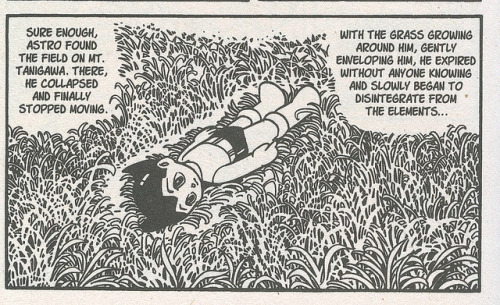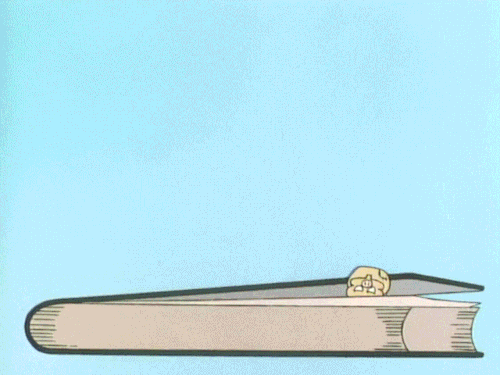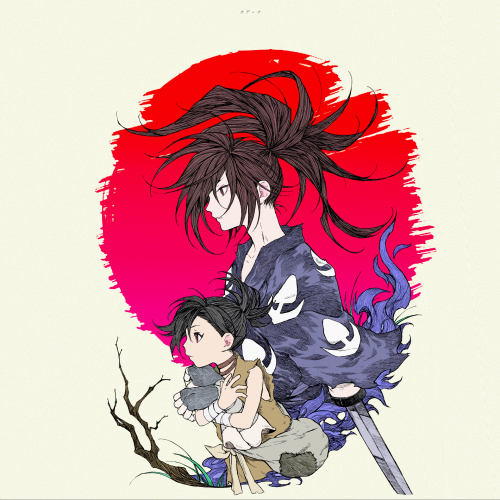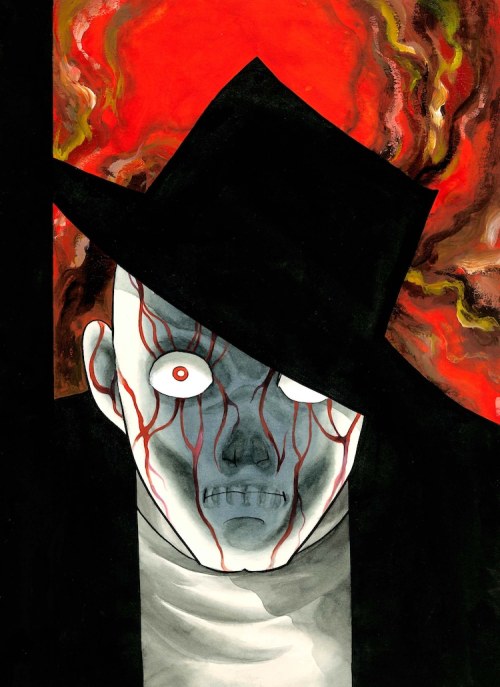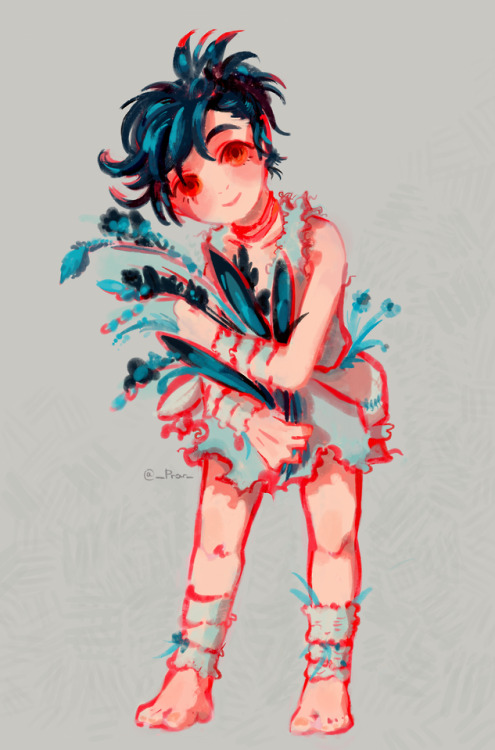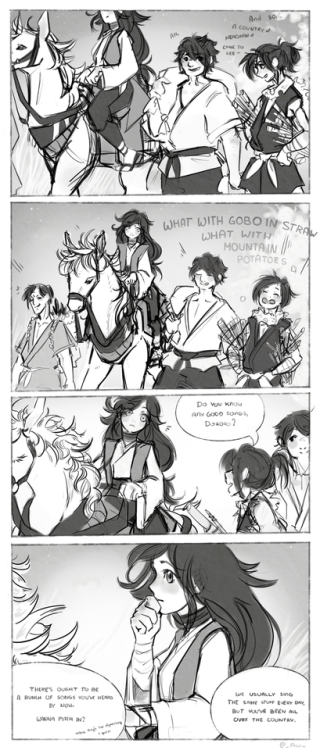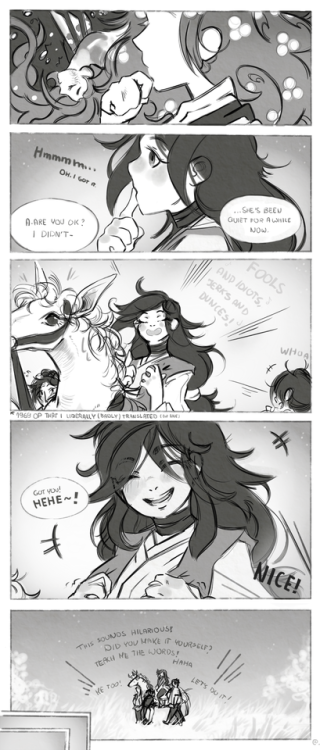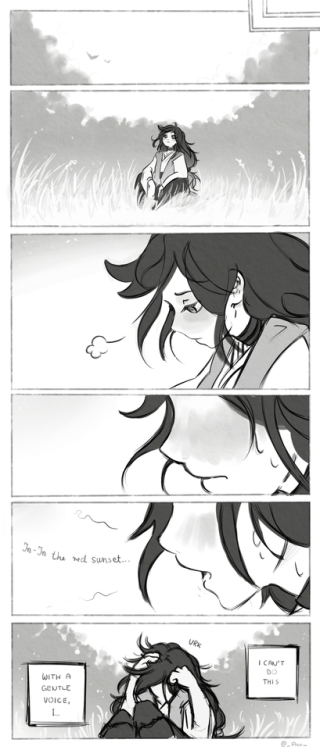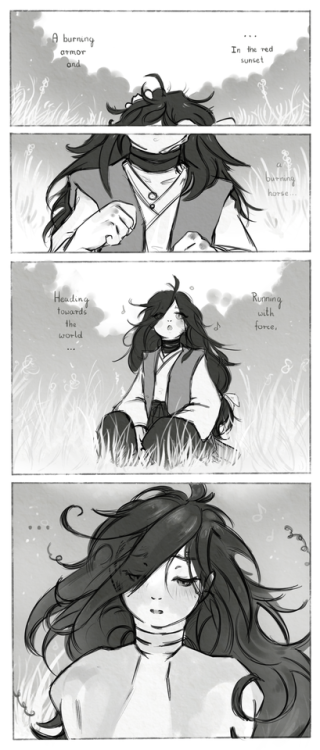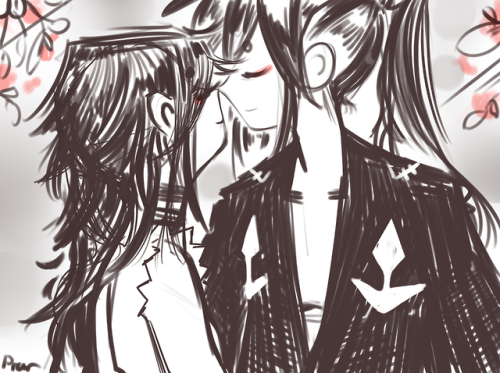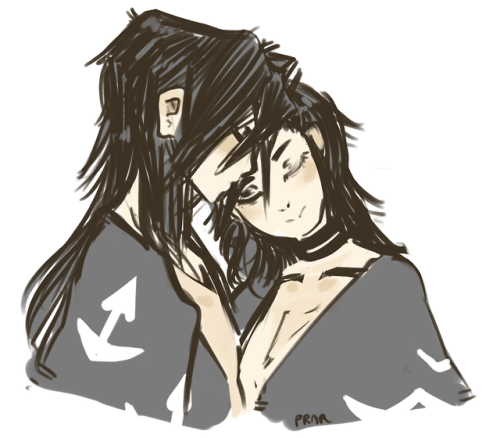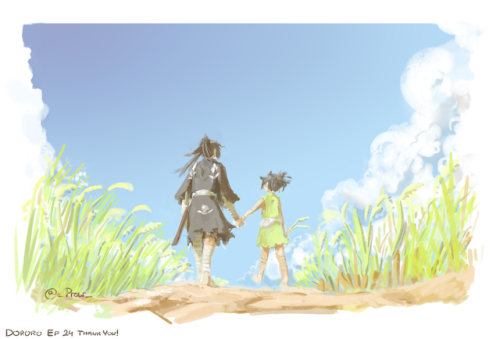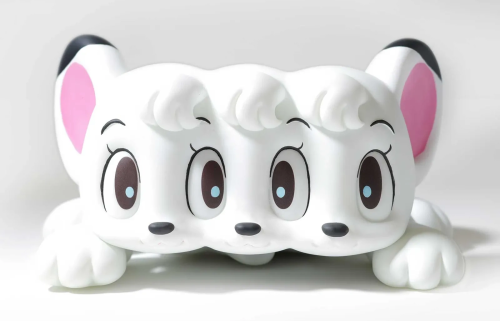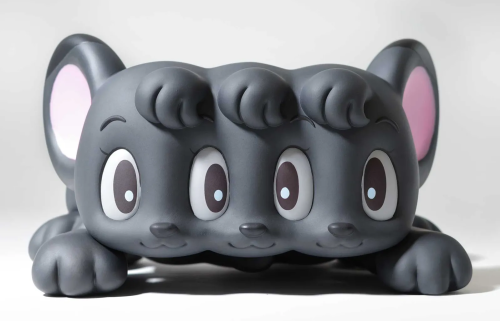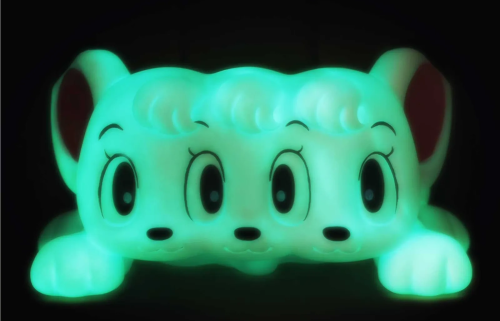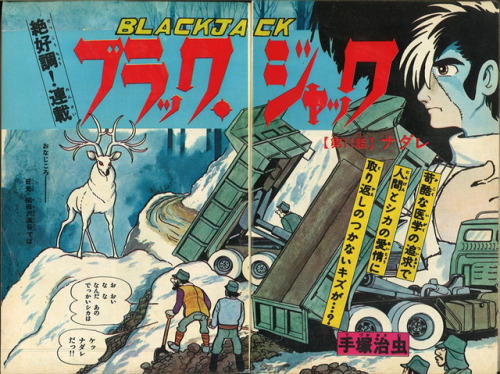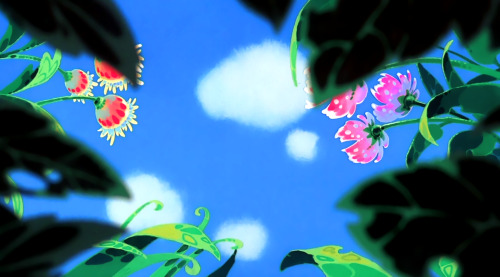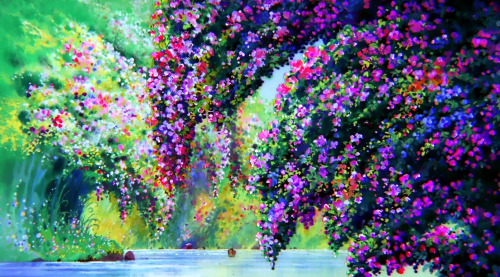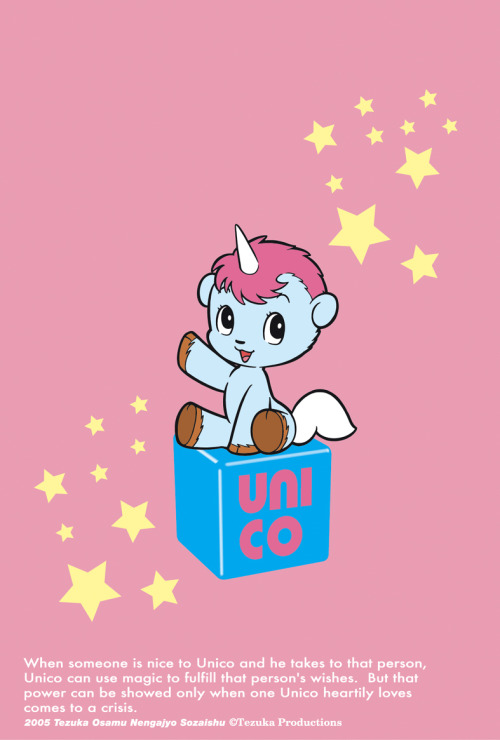#osamu tezuka

Continuing on the topic of autistic headcanons, here’s my boy Hyakkimaru. The 2019 anime one is so autistic, it warms my heart– I mean, it gives me FIRE!



You can see the process & my thoughts on my YouTube channel!
Based on Dororo OP 1969 lyrics. Dororo reluctantly faces her fear of singing. It is because whenever she sings gently/with a mature female voice, she is reminded of Mio and becomes distressed.
Gobo is japanese burdock btw. Also The first line of the long is ‘honge honge hongetara’, with hongetara meaning fools/idiots.
Post link

Jumping© Tezuka Productions.
Interview with Osamu Tezuka
”talking about experimental animation”
July 13, 1986
Recording at his home
————————————————————
Q. Why did you have time periods between creating your experimental animation works?
One thing was money, I did not have it at the time. Basically after the Mushi-Production, a lot of the finance was taken away.
Another thing, after the appearance of Mr. Kuri and a lot of artists at the Sougetu Art festival, I felt relieved because I thought they could take charge of the Japanese animation world.
Basically I was not interested in the Mushi Production, the animations that this production company was creating, especially the animationsfor television, made me think that I would make only one more movie in my life. At the time I was thinking practically.
TV animation has gone in a direction that I did not expect.
This has happened for cinema animation too.
Science Fiction and Drama have become more mainstream as a style of animation.
Most importantly, experimental animation, which I tried to do at the beginning, there are no artists that do this kind of thing now.
Certainly, I was aware that there are schools for young people and they had animation clubs.
These clubs were making parodies of animations that were on TV and cinema.
Alternatively, there were lots of imitations of Norman Mclaren’s, also Jiri Trnka’s…Umm maybe not him… and imitations of the series of experimental animations.
There is no originality in these works.
There have been no real artists in the last ten years.
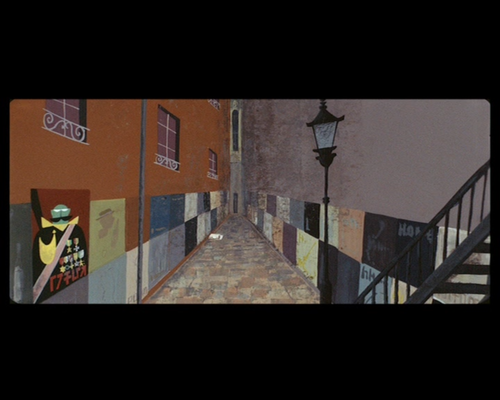
Stories of a Street Corner © Tezuka Productions.
The numbers of the festivals have increased overseas. At the time I was creating Story of a Street Corner there were no festivals.
While I was making the Pictures at an Exhibition, finally festivals in Annecy and Canada sprang up …Canada actually happened a little bit later….
I was thinking that this is the period when Japanese animation, which has a big audience and real features, should be understood internationally or globally.
I couldn’t understand why there were no animation artists in Japan.
I made a movie called Jump and thought if anyone does experimental work, it will be me.
Then, I did not focus on Japan and I created works in an international style
Including TV animation, cinema animation and experimental animation, all the works have been made for an overseas audience.
The point for me was that I never lose my independence.
Not like the animation producers that do subcontract work for companies overseas to try to get their own work shown in other countries.
I wanted to spread our work all over the world and believed my animation and that of the Tezuka Production must never lose independence.
Also I wanted to be a representative of Japanese animation and introduce the good parts of our animation to the world.
This might sound presumptuous but no one else has done it yet.
When I asked people to make experimental movies, they said they didn’t have the money, but at the time I didn’t have any money either.
I had to make something to prove myself, which is a good example, so I can say to people, “We can do it!”
Then I thought okay let’s make something that could win several awards.
But at the time, the great Mr. Kuri was going through a quiet spell and when I saw him I always asked him, please make something.
But he said he was not at the stage and that he was interested in something else.
At times he talked about the possibility of making new work.
The work of Mr. Kuri is recognized worldwide as iconic. But this is not a good thing.
The important thing from now on is to distribute good Japanese animation overseas, as the industry has become large.
I would like to take on this mission
And I am strongly motivated to keep making animation and gain a reputation at international festivals.

Jumping© Tezuka Productions.
Jumping was a film that explored this process of movie making.
I want to make my next work as a full scale production.
My work might not be able to be evaluated well in Japan.
I would like to convey big messages to the world.
The feeling can be described as: “I do not care about Japan”.
They are some Japanese animators who think the same way. I totally respect them.
I hope they create their own work for the next few decades.
And I want to clean up the current habits of Japanese animation.
————————————————————
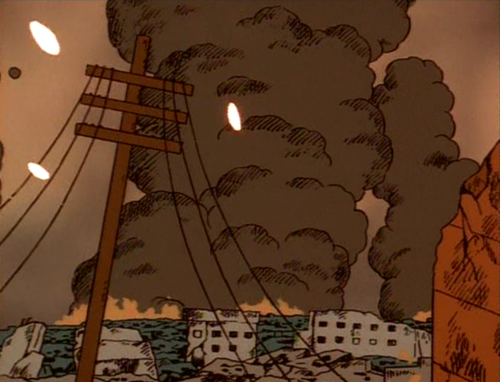
Jumping © Tezuka Productions.
Q. What was your inspiration for making Jumping?
The inspiration for Jumping was an animation in Hungary called Fly, made about ten years ago.
The movie captured movement through the eyes of a fly.
I was totally impressed by this film.
I thought about this movie a lot and I had an idea about a film tracking the movement of food through the mouth, stomach and large intestine until it leaves the body.
I was wondering how could I see inside the body of human beings but the idea was disgusting and dirty.
So I changed the idea to jumping around outside and thought this could be interesting.
This is an animation that was made through the imagination of the animators. We didn’t create any models of the scenes to help us draw it.
Mr. Junji Kobayashi drew and animated the pictures.
He was the animator of a movie called Phoenix 2772, and drew the cells of the highway in that movie, which are amazing and long.
I was in love with his work and asked him to make Jumping with me from the perspective of one person.
So, at the time he created a physical model of the city to measure the point of view to animate the pictures realistically.
He actually created a large model in the office of the Tezuka productions, and the model occupied even the corridor of the office.
When I made Jumping, he suggested we create a model.
But I thought the model might be too gigantic for the movie, so I asked him to do everything in his imagination and then gave him a story board.
I created the story board but this didn’t have the timing of the jumping, nor the speed of the movement and the tempo.
So he had to work these out.
The hardest part for him was achieving the camera angles.
He said “It is okay to draw jumping but the difference between the angle over the action and the dramatic angle were difficult to balance out.”
The most interesting and perplexing thing about this movie is the angles, so this movie has a lot of shots of the sky.
But the reality is it shouldn’t be showing the sky but instead the land.
It would have been more realistic to use the high-angle shot more often than using low angle shots, as the sights of the jumper will be moving between looking down and looking forward.
But I made Jumpinga different way. (deleted)
I think the view can go to the sky as it is Jumping, so it is okay for us.
Mr. Kobayashi actually drew the pictures and shot them from an 8mm camera.
Then, he showed me the films quite few times.
The result, the jumping, didn’t look like the actual jumping that he imagined in the beginning.
In other words, the height of the jumping was okay but when they are going up and landing, it did not look like jumping.
When he tried to jump up it looked too smooth. And when the guy landed it looked like dropping.
I asked him to redraw them numerous times and had a lot of discussions to make sure he had it right.
In the end I checked his pictures before the shooting and took pictures from the sequence he drew.
There is a scene where a guy jumps on a bridge quickly, Mr. Kobayashi made the scene appear very smooth but I took out lots of pictures to make it more realistic.
Our big challenge was to reduce the number of cells to make the actions in this film appear realistic.
And when I showed the work to the audience, the things people liked were the idea of jumping and the sequence of each bounce containing a gag.
The unexpected situation was the thing that the audience liked the most.
There were roars of laughter after the bridge sequence when there appeared a whale and tribes. This is something I heard from a friend who saw the film at a film festival.
I was pleased to hear this because people understood what I was trying to achieve. I feel animation needs to have a touch of humour.
After the humorous sequences I brought up the subject of war.
One thing I wanted to include was an important theme, not just jumping.
The unknown thing jumping, that the audience never sees and cannot tell if it’s either a human or animal, gets out of control.
Usually jumping becomes smaller after a while but in this movie it becomes unstoppable.
And at the end the unseen person or animal jumps into an atomic bomb.
The idea was that the culture of human beings is becoming more and more technological and unstoppable and as a result is going to hell.
It ends up as the ultimate fear of nuclear war.
In other words, I wanted to include irony in the film.
It could have been omitted but I had to include hell as a scene in the movie because I wanted to explain this feeling of irony.
I think the audience understood this.
As result, I thought this movie had an international theme.
————————————————————

Jumping © Tezuka Productions.
Q. What do you think of the colour of the final piece?
At the beginning I wanted to give the movie the flavour of an art animation.
At first, I had an idea to use cells for only the outlines of the pictures.
Then, I laid out the pictures underneath the cells each time and painted them with water colours using the cells as guides.
But I couldn’t find enough people who were skilled in this technique.
Also this process is very time consuming.
I was afraid it could take two or three years to complete.
So unfortunately, I used cells to create the movie.
I reduced and simplified the number of colours in the scenes and tried to make movement as the most important thing.
I didn’t want to make the technique of the movement weaker by using many beautiful colours.
————————————————————
Q. Please tell us about computer graphics?
Computer graphics are common place today and there are lots of these being used in television advertisements.
The time will come when it will be easy to make a movie like mine by using computer graphics but the joy of creating a film by hand cannot be beaten.
Computer graphics makes working today in film very easy but it also makes the end product cold and banal.
I try to avoid this in my movies.
But I think that the technology of computer graphics will soon be different and significantly alter animation techniques.
It is in a transition period now.
So if I used that by chance, I think that it might not last more than 3 years…
I really wanted keep the preciousness of the hand animation in the work.
But I never want to make this type of film again.
————————————————————
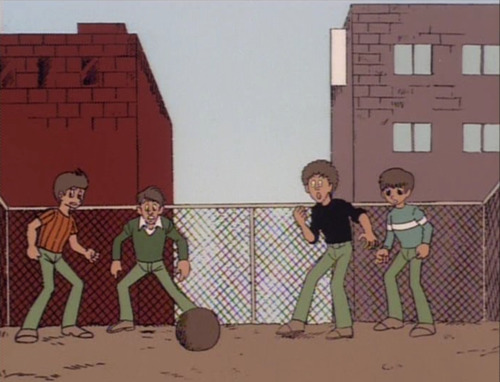
Jumping© Tezuka Productions.
Q. What did the characters see in the movie?
So, everyone was trying to escape from something, then a lot of the audience think that something was chasing the main character…
This is very interesting for me.
One impression that someone told me was that it could be an alien or something chasing them…
The same person said that the character jumped for a long time…he should have stopped. Why was he jumping such a long time…
And there was another impression regarding the sound of a sigh at the end of the movie…
An audience member said that the sound of this sigh must have come from someone in one of the houses in the opening sequence because the main character came back to that same house again…
I found this idea very interesting as people get different impressions from the movie.
So the movie was not driven by the story and I had freedom to create it.
In the movie called Fly, the fly died by slapping at the end…
But the scene could’ve taken a different path if the fly escaped and did not die.
I think this is the fun of the experimental animation.
I think that experimental animations should not focus on narrative.
…because the creators start abbreviating the details to explain what is going on, and the scenes that describe the stories will be increased.
If animations started to do this, then they would become common.
————————————————————
Q. How would you evaluate “Jumping”?
I cannot say that I either liked the work or disliked it.
It is a like a son who has been thrown out.
I just think that I am pleased because the work won some awards.
I cannot tell if it’s a good son or not but I must say the child had good luck.
Getting awards is dependent on luck.
If there were not many competitors, the work could get awards even if the quality of the work is low.
I think that all Japanese awards are like that.
Perhaps, the animation can be supported by the passion of the creators.
If the work has passion, it will be well evaluated even it is not well made.
Even the large epic animations made by Automation if they lack passion will not be evaluated well.
I think the passion of the creators affect the animation.
In this case, I think that the work has passion. In other words, the work has all the obsessions of Mr. Junji Kobayashi.
He was desperate, reckless and totally tormented when he created his work.
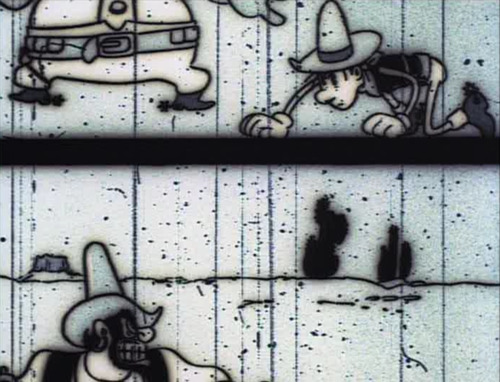
Broken Down Film © Tezuka Productions.
Compared to Jumping, I heard that the people who worked on Broken Down Film enjoyed making this film alongside me. So the audience might be able to feel the joy of our work…
————————————————————
Q. Have you been able to express what you wanted to create in your animation?
Not so much for television animation.
There were some jobs that I did that were just made for ratings, merchandising and making money. Almost none of them are interesting.
I made the works in complicated circumstance with the people that surrounded me.
But the experimental works were not made like this. All my experimental animations were funded by myself, and I made a great effort to create them.
I never make work that is careless.
In short, the television programs couldn’t be worse.
It can’t be helped.
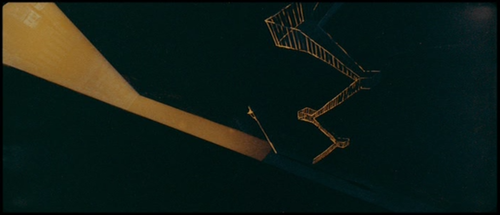
Stories of a Street Corner © Tezuka Productions.
END

